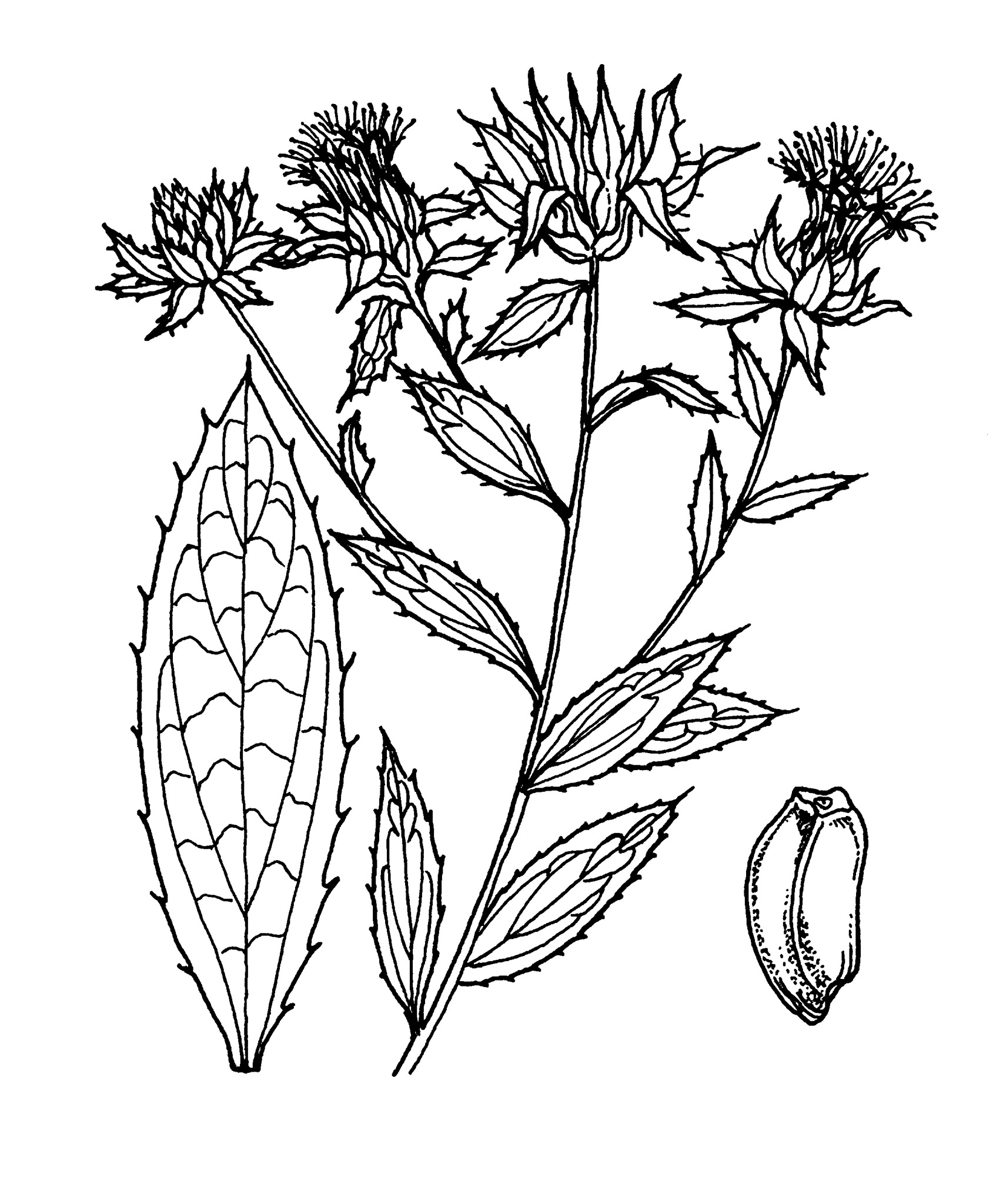
Hebrew qarthami — to paint, an allusion to the brilliant orange colour yielded by the flowers of C. tinctorius.
Annual herbs or rarely perennial shrubs, usually spiny. Stems erect, woody at base. Leaves basal and/or along stems, alternate, toothed to divided, spiny. Capitula diskoid, terminal, solitary or in corymbs, sessile. Involucral bracts in several rows, overlapping, unequal, spine-tipped. Receptacle hairy, flat. Florets bisexual, tubular, purple, pink, orange, yellow or white. Achenes obovoid, 4-angled, smooth, outer ones wrinkled, glabrous. Pappus usually of 2 rows of ciliate scales, outer longer than inner or sometimes absent from some or all achenes.
Hebrew qarthami - to paint, an allusion to the brilliant orange colour yielded by the flowers of C. tinctorius.
Five species have become naturalised in Australia; one is a noxious weed.
Smooth inner achenes often with numerous scales; curved spiny leaves.
About 17 species from the Mediterranean region and Asia.
Source: (2002). Asteraceae. In: . Horticultural Flora of South-eastern Australia. Volume 4. Flowering plants. Dicotyledons. Part 3. The identification of garden and cultivated plants. University of New South Wales Press.
